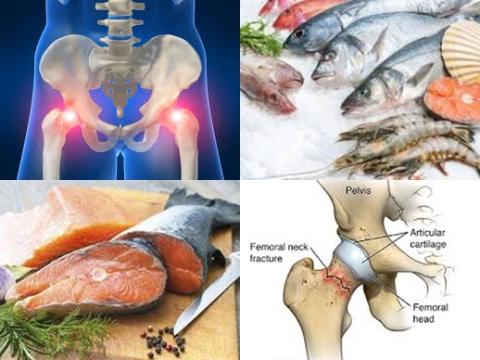
Objectives:
Previous studies have shown that fish consumption and dietary intake of n-3 polyunsaturated fatty acids (n-3 PUFAs) are associated with hip fracture; however, findings were conflicting. Therefore, this review article (meta-analysis) has been conducted.
Do both dietary intake of fish and n-3 polyunsaturated fatty acids decrease hip fracture risk?
Study design:
This review article included 7 prospective cohort studies and 3 case-control studies with a total sample size of 29,2657 participants. The age of participants was 20 years or older.
Results and conclusions:
The investigators found combining 8 effect sizes from 4 prospective cohort studies and 2 case-control studies revealed a significant inverse association between fish consumption and risk of hip fracture [pooled effect size = 0.88, 95% CI = 0.79-0.98, p = 0.02].
Although this relationship became non-significant in prospective cohort studies, a significant inverse association was found in prospective cohort studies with sample size of 10,000 individuals or more and studies that considered body mass index as a covariate.
The investigators also found dietary intake of n-3 PUFAs significantly reduced risk of hip fracture with 12% [pooled effect size = 0.88, 95% CI = 0.80-0.98, p = 0.02].
The investigators concluded that both fish consumption and dietary intake of n-3 PUFAs have protective effects on bone health and decline the risk of hip fracture.
Original title:
Dietary intake of fish, n-3 polyunsaturated fatty acids and risk of hip fracture: A systematic review and meta-analysis on observational studies by Sadeghi O, Djafarian K, […], Shab-Bidar S.
Link:
https://www.ncbi.nlm.nih.gov/pubmed/29244536
Additional information of El Mondo:
Find more information/studies on fish consumption, n-3 PUFAs and elderly right here.
Fatty acids in fish are all n-3 PUFAs.